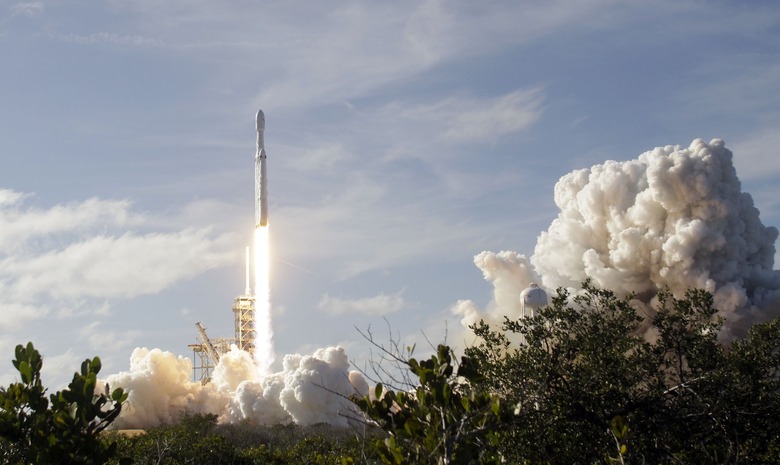SpaceX Will Try To Launch Another Batch Of Starlink Satellites On Saturday
- The SpaceX Starlink mission that was scheduled for Wednesday and then Friday has now been pushed to Saturday.
- Weather conditions have repeatedly delayed the launch, which includes a batch of 57 new communications satellites.
- The launch is slated for 10:55 a.m. ET on Saturday, weather permitting.
It's been something of a rough week for SpaceX. Nothing has really gone wrong, but the weather just really, really doesn't seem to want to cooperate with the company's plans to launch another batch of its Starlink communications satellites into orbit. Originally scheduled for Wednesday, the launch was pushed back to today, Friday the 10th, but that didn't work out either. Now, the back-up-to-the-back-up launch window is slated for Saturday, July 11th, at 10:55 a.m. ET.
This will be the third attempted launch of the Falcon 9 which is carrying not only a pair of new satellites for a company called BlackSky but also a heaping batch of 57 shiny new Starlink satellites. Well, actually they're not quite as shiny as they used to be, but we'll get to that in a minute.
Unfortunately, the forecast doesn't look super favorable for launch, though the takeoff could still happen as scheduled. Meteorologists suggest that showers could put a damper on SpaceX's launch plans, but things might clear up by the time the Falcon 9 is slated to head skyward.
As for the Starlink satellites themselves, these will be newer models than most of the ones SpaceX already has in Earth orbit. A big complaint from scientists after the Starlink satellites began taking over the skies was how visible they were to astronomers working on the ground. Put simply, the satellite horde can completely ruin observations of the cosmos when they pop up at the wrong times.
SpaceX toyed around with a few possible solutions, including painting the satellites matte black to reduce reflections, but these newest models will be equipped with retractable sun shades that should reduce the reflection of sunlight off the shiny antennas and reduce the overall visibility of the satellites as seen from the ground. That will hopefully be enough to mitigate the impact on astronomy efforts, but we won't know for sure until researchers can weigh in the change.
As for the Falcon 9 that is doing the heavy lifting on Saturday, SpaceX notes that it has flown previously:
Falcon 9's first stage previously supported Crew Dragon's first demonstration mission to the International Space Station, launch of the RADARSAT Constellation Mission, and the fourth and seventh Starlink missions. Following stage separation, SpaceX will land Falcon 9's first stage on the 'Of Course I Still Love You' droneship, which will be stationed in the Atlantic Ocean."
At present, there remains about a 60% chance that the launch will be able to proceed as planned, but as with anything that relies on the weather, that could change dramatically on very short notice.
